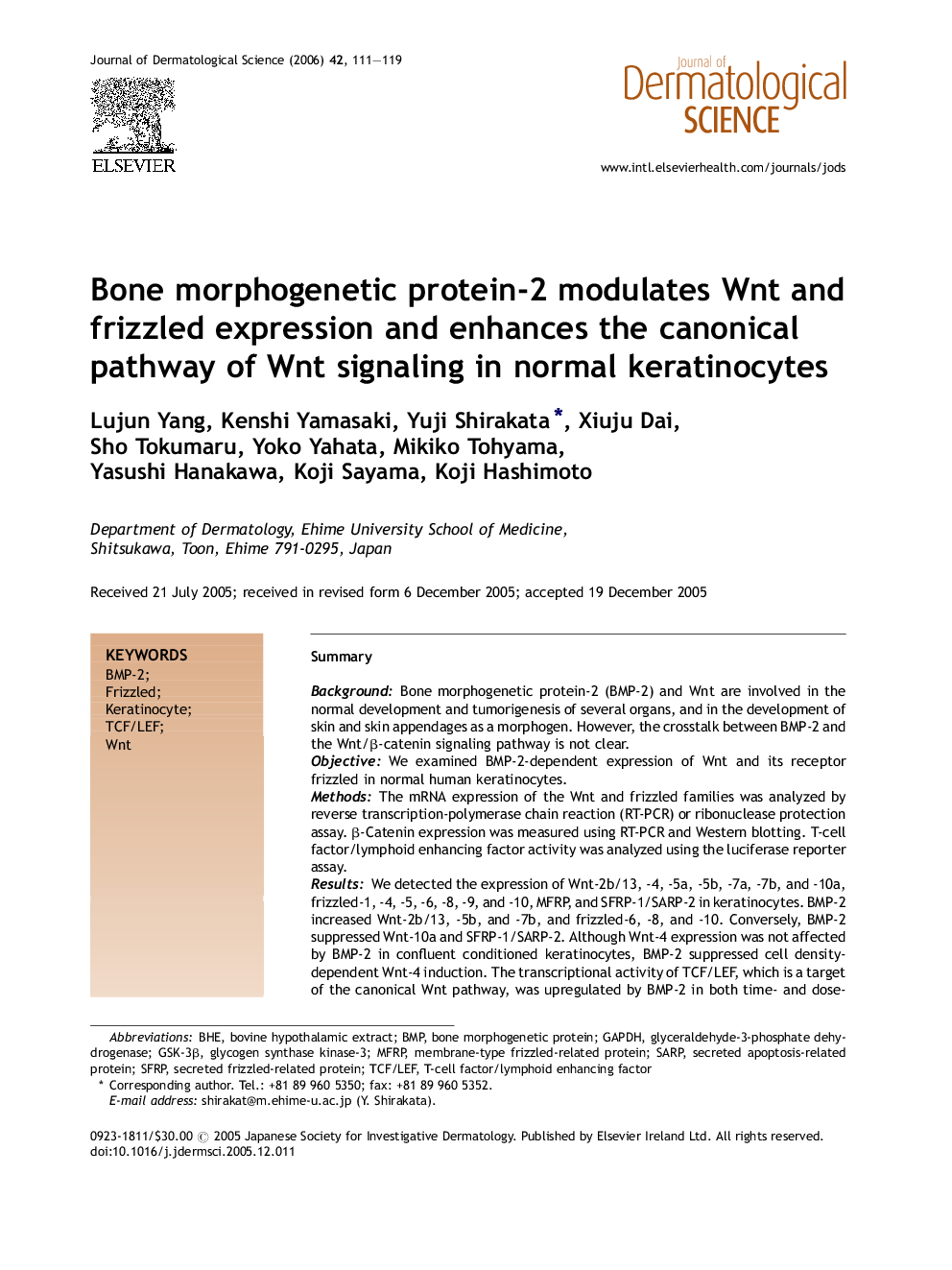| Article ID | Journal | Published Year | Pages | File Type |
|---|---|---|---|---|
| 3214488 | Journal of Dermatological Science | 2006 | 9 Pages |
SummaryBackgroundBone morphogenetic protein-2 (BMP-2) and Wnt are involved in the normal development and tumorigenesis of several organs, and in the development of skin and skin appendages as a morphogen. However, the crosstalk between BMP-2 and the Wnt/β-catenin signaling pathway is not clear.ObjectiveWe examined BMP-2-dependent expression of Wnt and its receptor frizzled in normal human keratinocytes.MethodsThe mRNA expression of the Wnt and frizzled families was analyzed by reverse transcription-polymerase chain reaction (RT-PCR) or ribonuclease protection assay. β-Catenin expression was measured using RT-PCR and Western blotting. T-cell factor/lymphoid enhancing factor activity was analyzed using the luciferase reporter assay.ResultsWe detected the expression of Wnt-2b/13, -4, -5a, -5b, -7a, -7b, and -10a, frizzled-1, -4, -5, -6, -8, -9, and -10, MFRP, and SFRP-1/SARP-2 in keratinocytes. BMP-2 increased Wnt-2b/13, -5b, and -7b, and frizzled-6, -8, and -10. Conversely, BMP-2 suppressed Wnt-10a and SFRP-1/SARP-2. Although Wnt-4 expression was not affected by BMP-2 in confluent conditioned keratinocytes, BMP-2 suppressed cell density-dependent Wnt-4 induction. The transcriptional activity of TCF/LEF, which is a target of the canonical Wnt pathway, was upregulated by BMP-2 in both time- and dose-dependent manners. However, BMP-2-dependent differentiation of keratinocytes suppressed TCF/LEF transcriptional activity.ConclusionThese results suggest that BMP-2 modulates the expression of molecules involved in Wnt signaling, and activates the canonical Wnt pathway in normal human keratinocytes. Moreover, Wnt signaling may be influenced by the fate of keratinocytes, such as proliferation, migration, and differentiation.
